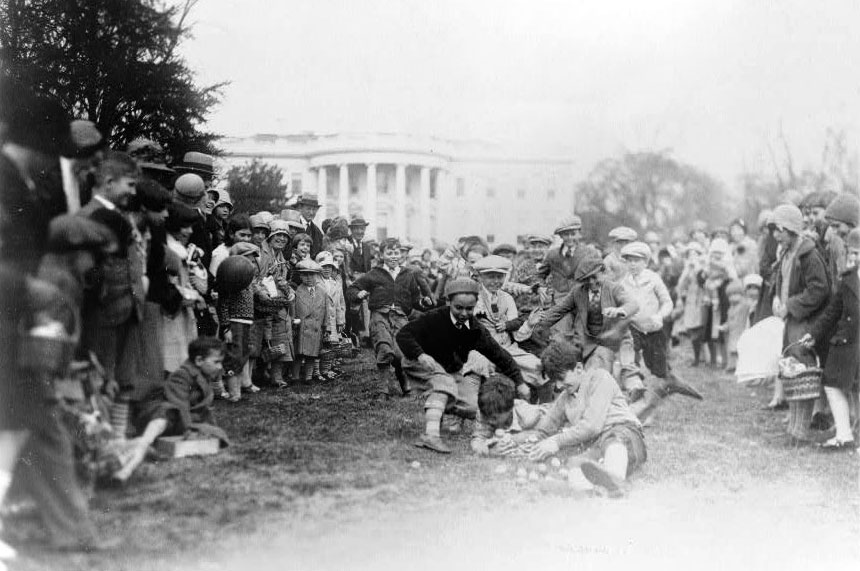Since 1878, American presidents and their families have celebrated Easter Monday by hosting an ‘egg roll’ party. Held on the South Lawn, it is one of the oldest annual events in White House history. Some historians note that First Lady Dolley Madison originally suggested the idea of a public egg roll, while others tell stories of informal egg-rolling parties at the White House dating back to President Lincoln’s administration. Beginning in the 1870s, Washingtonians from all social levels celebrated Easter Monday on the west grounds of the U.S. Capitol. Children rolled brilliantly dyed hard-boiled eggs down the terraced lawn.
Soon a concern for the landscape led to a bill that banned the rolling of eggs on Capitol grounds. In 1876, President Ulysses S. Grant signed the bill into law. The new edict went unchallenged in 1877, as rain cancelled all the day’s activities, but egg rollers who came in 1878 were ejected by Capitol Hill police.
In 1878, Easter Monday celebrants who were not allowed to roll eggs on the grounds of the U.S. Capitol headed up Pennsylvania Avenue to the White House. The children knew about the low hills on the South Lawn, and hoped their egg rolling games would be permitted there. President Rutherford B. Hayes instructed his guards to let the youngsters through the gates. It proved to be a very popular change of venue. By Easter Monday 1880, an article in the Evening Star reported that eager egg rollers had taken “absolute possession of the grounds south of the White House.” (The White House Historical Association)
John Philip Sousa wrote “Easter Monday on the White House Lawn” in 1911 as part of his suite “Tales of a Traveler.” This delightful piece is performed by the “The President’s Own” United States Marine Band. It’s a lively, humorous novelty and is not considered a march.


easter its been around since 1878 they were partys
“It’s a lively, humorous novelty and is not considered a march.”
It’s not a march: it’s ragtime. Sousa was versatile!
It’s absolutely a march. It’s in the Marine Band march book so it’s a march!